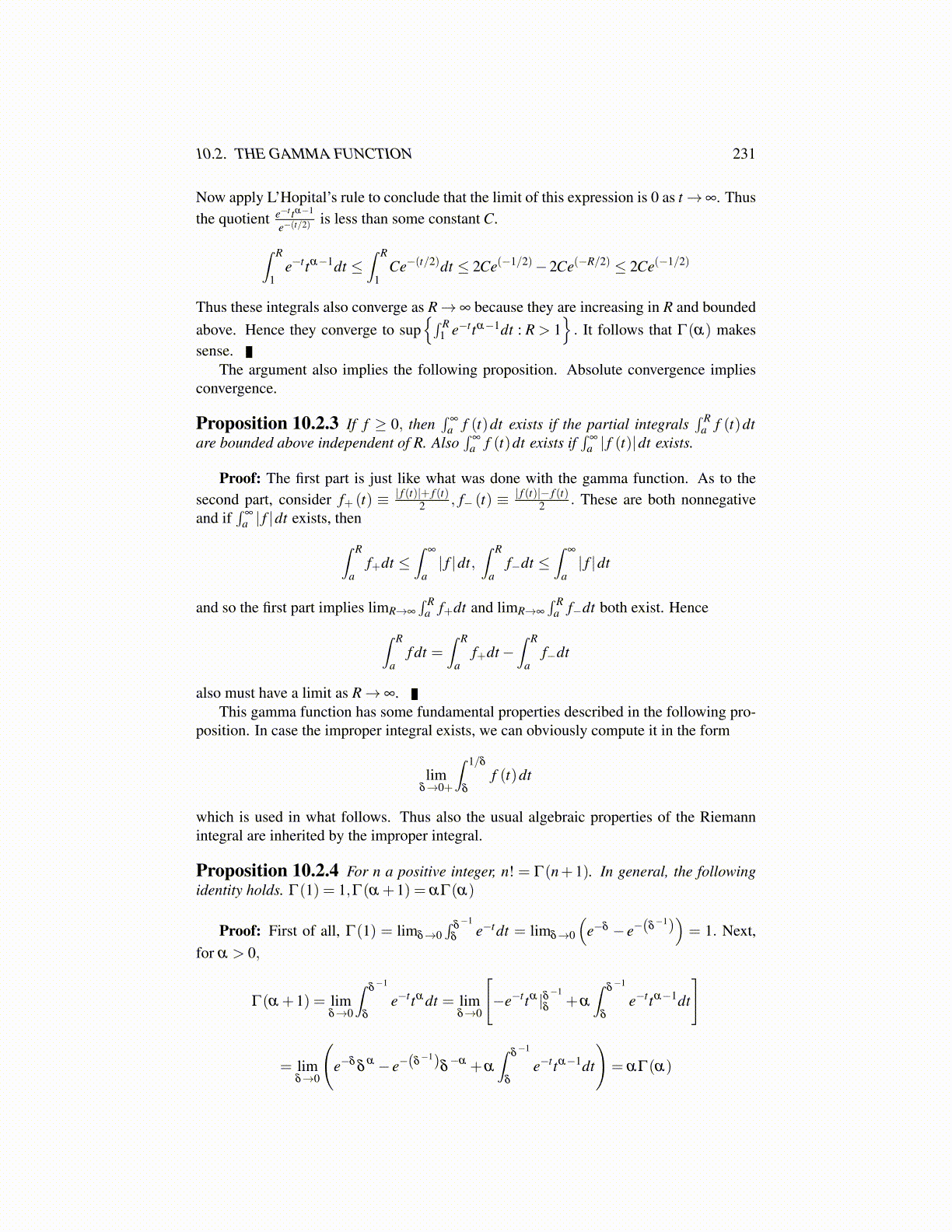
10.2. THE GAMMA FUNCTION 231
Now apply L’Hopital’s rule to conclude that the limit of this expression is 0 as t → ∞. Thusthe quotient e−t tα−1
e−(t/2) is less than some constant C.
∫ R
1e−ttα−1dt ≤
∫ R
1Ce−(t/2)dt ≤ 2Ce(−1/2)−2Ce(−R/2) ≤ 2Ce(−1/2)
Thus these integrals also converge as R → ∞ because they are increasing in R and boundedabove. Hence they converge to sup
{∫ R1 e−ttα−1dt : R > 1
}. It follows that Γ(α) makes
sense.The argument also implies the following proposition. Absolute convergence implies
convergence.
Proposition 10.2.3 If f ≥ 0, then∫
∞
a f (t)dt exists if the partial integrals∫ R
a f (t)dtare bounded above independent of R. Also
∫∞
a f (t)dt exists if∫
∞
a | f (t)|dt exists.
Proof: The first part is just like what was done with the gamma function. As to thesecond part, consider f+ (t) ≡ | f (t)|+ f (t)
2 , f− (t) ≡ | f (t)|− f (t)2 . These are both nonnegative
and if∫
∞
a | f |dt exists, then∫ R
af+dt ≤
∫∞
a| f |dt,
∫ R
af−dt ≤
∫∞
a| f |dt
and so the first part implies limR→∞
∫ Ra f+dt and limR→∞
∫ Ra f−dt both exist. Hence∫ R
af dt =
∫ R
af+dt −
∫ R
af−dt
also must have a limit as R → ∞.This gamma function has some fundamental properties described in the following pro-
position. In case the improper integral exists, we can obviously compute it in the form
limδ→0+
∫ 1/δ
δ
f (t)dt
which is used in what follows. Thus also the usual algebraic properties of the Riemannintegral are inherited by the improper integral.
Proposition 10.2.4 For n a positive integer, n! = Γ(n+1). In general, the followingidentity holds. Γ(1) = 1,Γ(α +1) = αΓ(α)
Proof: First of all, Γ(1) = limδ→0∫
δ−1
δe−tdt = limδ→0
(e−δ − e−(δ
−1))= 1. Next,
for α > 0,
Γ(α +1) = limδ→0
∫δ−1
δ
e−ttα dt = limδ→0
[−e−ttα |δ
−1
δ+α
∫δ−1
δ
e−ttα−1dt
]
= limδ→0
(e−δ
δα − e−(δ
−1)δ−α +α
∫δ−1
δ
e−ttα−1dt
)= αΓ(α)